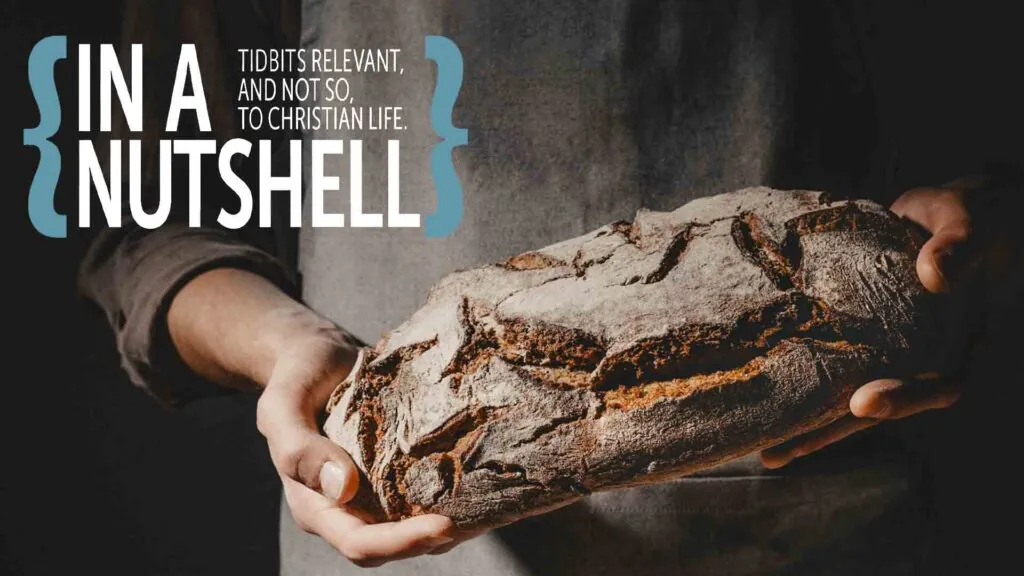Translation that busts a gut
“During my time of study in Amsterdam several decades ago, I personally experienced this challenge of translation. One day I walked downstairs and happened to meet the landlady. She looked at me quizzically, as if to ask what I was doing. “I’m taking a break from my studies,” I tried to say in Dutch. Unfortunately, “taking a break” does not translate well, so I changed the word for “break” to paus. And, apparently, I didn’t pronounce it well. What I actually said to my Dutch friend was, “The pope has a hernia.” A big fan of the pontiff, she was very concerned.”
– R.C. Sproul (in What’s in the Bible)
A Christian take on art and riots too…
When it comes to all the various subjects taught in our Christian schools, there are a few where the question is more often asked, “How do Christians teach this subject any differently than non-Christians?” While Math might be at the top of that list, Art is another that might follow somewhere soon after. But as Rev. Carl Vermuelen noted in the June issue of Una Sancta, there is not only a distinctly Christian way to teach art, but a pressing need to do so. He points readers to Nancy Pearcey’s excellent book, Saving Leonardo, where the Pearcey describes how, as the West moved away from its Christian roots, its art changed too. Before, no matter how artists might have differed, all agreed that we had purpose and life had meaning, and that truth was discoverable.
But, “By the time of the impressionists, people no longer hoped to achieve the expression of an ideal universal order … or universal knowledge.” She documents the development of these ideas through impressionism, Picasso’s cubism and geometric abstractionism, as well as through the pantheism of Van Gogh, and Kadinsky’s art infused with spiritualism. The ideas of these artists and others in their thought world developed further into secular materialism, as well as pantheism and postmodernism.
The vicious attacks on Western civilization we see today are the direct result of these ideas. Many of the artists she discusses as she describes this revolutionary change in society (Mondriaan, Kandinsky, Monet, Van Gogh, Warhol, Picasso), are included in the list of recommended artists to be studied in the arts curriculum at our [Christian schools].
That means the art teachers have a wonderful opportunity to show the children from the earliest grades the big narrative that has been shaping our society. What artists like Van Gogh, Picasso and the Fauvres thought and expressed in their art is what we are seeing in action on the streets today. This is what our children need to understand. Then we won’t want them to paint like Picasso, but we will want them to understand why Picasso painted like he did. In this way, we will help them make sense of the George Floyd riots, the burning police cars and the looting.
A dad joke
QUESTION: What two body parts are able to both run and smell?
ANSWER: Your nose and your feet!
Kevin DeYoung (and John Frame) on birth control…
“You don’t have to be a fertility maximalist to recognize that children are always lauded as a blessing in the Bible. Maybe on another occasion, I’ll write about the triumph of birth control in the 20th century and how it happened with little theological reflection from the church, but for now let me at least nudge you in the direction of John Frame:
‘It seems to me that birth control is permissible in many situations, but it bears a high burden of proof. It can be a responsible choice, but is probably overused.’”
SOURCE: It’s Time for a New Culture War Strategy
Did he see the transgender debate coming?
“Fallacies do not cease to be fallacies because they become fashions.”
– G.K. Chesterton, in the Illustrated London News
Mainstream and social media’s flaws
These three quotes are all from a time before the Internet but seem applicable to Twitter and Facebook too.
“Everything you read in newspapers is absolutely true, except for that rare story of which you happen to have first-hand knowledge.”
– Edward Knoll, sharing what has been called “Knoll’s Law of Media Accuracy.” His point was that when we see a story we know about we’ll be able to spot the faults in the reporting. But when it a story is about an event we don’t know anything about, we’ll often forget the errors in the previous account, and take this one as if it is fully reliable.
“If you don’t read the newspaper, you are uninformed. If you do read the newspaper, you are misinformed.”
– commonly attributed to Mark Twain, though he seemingly didn’t say it, which is a lesson in itself.
“You open the newspaper to an article on some subject you know well…. you read with exasperation or amusement the multiple errors in a story, and then turn the page to national or international affairs, and read as if the rest of the newspaper was somehow more accurate about Palestine than the baloney you just read. You turn the page, and forget what you know.”
– Michael Crichton on the “Gell-Mann Amnesia effect” as named after his friend
Creating their own commandments
It is no coincidence that a society that ignores all God’s commandments will create their own, easier to obey, moral code. They might take God’s name in vain, violate the Sabbath, covet their rich neighbor’s good, teach kids how to fornicate, and even proclaim the murder of the unborn a right, but because they use paper, rather than plastic, straws they can still feel righteous. As one quote, purportedly from a Winifred Egan, put it:
“What an irony that a society confronted with plastic bags filled with the remains of aborted babies should be more concerned about the problem of recycling the plastic.”












